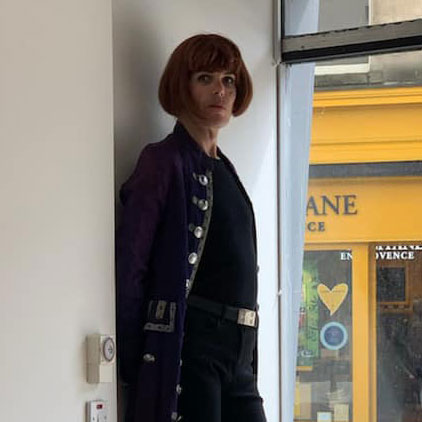Cats' eyes: Why they're special and common problems
Entranced by cats' eyes? Learn all about what's so special about them and what they can tell you about your kitty
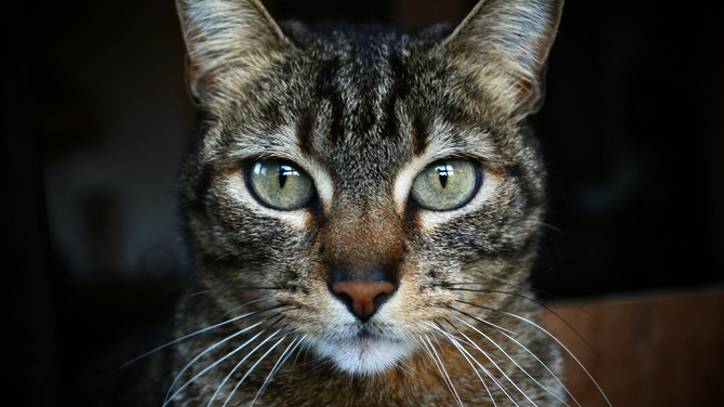
Cats' eyes may not be something you pay much attention to if you have cats around you all the time, but the more you think about them, the weirder they seem. And if you're only now thinking about how weird they are, we're here to answer all your questions.
What's the deal with cats and their strange eyeballs? Why do they have those peculiar vertical slits for pupils? Can cats see in the dark and what do the shapes and colors mean? And why do cats always seem to have crusty blobs of gunk in the corners of their eyes?
If such cat eye-related thoughts are keeping you awake at night, fear not. Here's where you can find out everything you need to know about your furpal's eyes: why they look like they do, how they work, what eye health problems you should watch out for and what your cat might be telling you with its eyes.
Read on for all the illuminating details, and if you want to know even more about your cat's body, see our guide to cat teeth.
- Indoor vs outdoor cats: Do cats need to go outside?
- Best outdoor cat enclosure: Allow your cat to roam safely
What is special about cats' eyes?
Cats' eyes are very different from human eyes. Obviously there's the issue of those pupils, but we'll come back to those in a minute.
Structurally, cats' eyes, like ours, have pupils to lens light into the eyes, retinas at the back of the eye with two types of light receptors – rods for detecting light, and cones for detecting color – and an optic nerve to transmit all that light information to the brain.
One big difference between cats' eyes and our eyes is the number of rods and cones in the retina. Cats have a lot more rods than we do, which means they can see better in the dark than us, but they have fewer cones, giving them poorer color vision.
Get the best advice, tips and top tech for your beloved Pets
Unlike dogs, cats aren't color blind, however it's thought that they don't perceive color as intensely as we do; they can see blues and yellows fairly well, but like some humans they can't distinguish between red and green.
Their balance of rods and cones means they don't see the world in as much detail as we do, either; they're not very good at focusing on anything close, and their distance vision isn't too hot either. However the construction of their eyes means that they're exceptionally good at spotting anything small and squeaky within pouncing distance, making them incredibly effective predators.
As well as the upper and lower eyelid, cats also have a third inner eyelid called the nictitating membrane, a protective translucent layer that you might occasionally glimpse when your cat blinks, and also if your cat's unwell as it may partially close over its eyes.
And the reason that cats' eyes sometimes glow in the dark? A layer of tissue at the back of the eyes called the tapetum lucidum, which reflects light back.
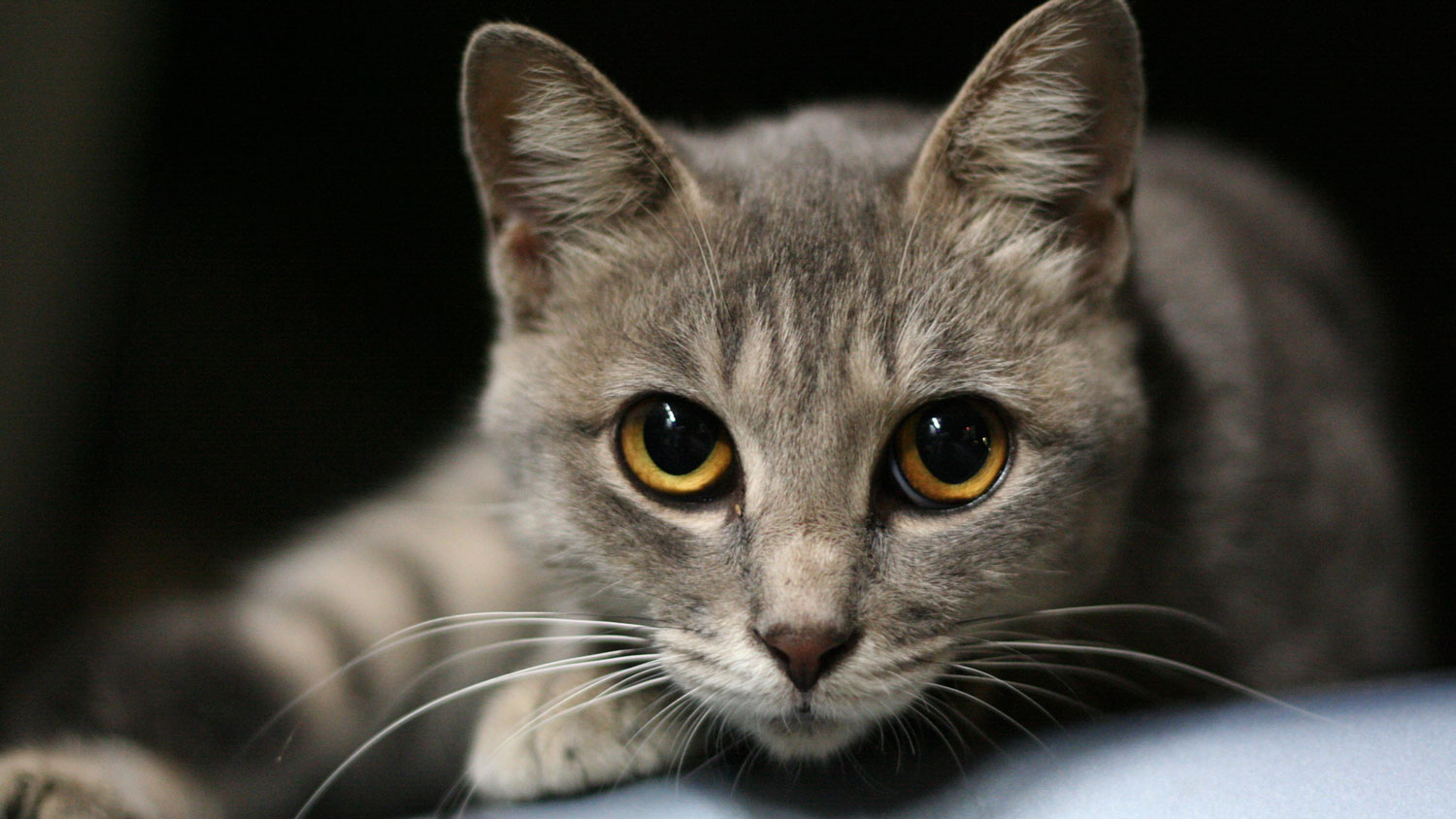
Why are cat eyes slits?
The most striking features of cats' eyes are undoubtedly those vertical slits for pupils. They're not unique to cats – you'll also see them on lizards, snakes and crocodiles – and what these creatures all have in common is that they tend to hunt low to the ground. And it's believed that vertical slits as pupils deliver better depth perception and make it easier to focus on prey when you don't have a lot of height to work with.
Interestingly big cats such as lions and tigers have round pupils; it's thought that they don't need the vision-enhancing properties of slits because their eyes are further from the ground.
Another advantage of slits is that they make it a lot easier – and quicker – to switch between a constricted and dilated state, and the change in size is much larger than in human eyes.
What this means is that cats can adapt much better to different lighting; at night they'll open their pupils wide to let all the light in, while during the day they'll narrow them down to razor-thin slits. And because of this, cats can hunt at all hours, giving them a huge predatory advantage.

Can cats see in the dark?
While, yes, cats can indeed see in the dark, there's a little more to it than that. While cats can't actually see in total darkness, they can see very well in extremely low light. As we've mentioned they have a lot more light-gathering rods in their retinas than we do, so in what we may perceive as total darkness, they can still see perfectly well.
On top of that they have another visual advantage that makes it easier for them to see in the dark. The tapetum lucidum we mentioned earlier, that makes their eyes appear to glow in the dark? Its actual function is to bounce light back within the eye, effectively enhancing their night vision.
What cat eye colors are there?
Most cat eye colors can be found on a spectrum between green and copper, with yellow in the middle, but as with most feline-related things it's just a little more complex than that. The color of a cats' eyes – as well as its skin and fur – is determined by the amount of melanin it has in its genetic makeup.
The more melanin a cat has, the more intense its eye color will be, and cats with low levels of melanin tend to have blue eyes; white cats with blue eyes are also likely to be deaf. Pedigree cats tend to have much more intense eye coloring than common moggies, but moggies are more likely to have attractive mixed tones in their eyes.
Yellow is the most common color for cats' eyes, while the rarest colors are orange and hazel. And of course some cats have heterochromia; that is, two different colored eyes, caused by a genetic mutation blocking pigmentation to one iris.
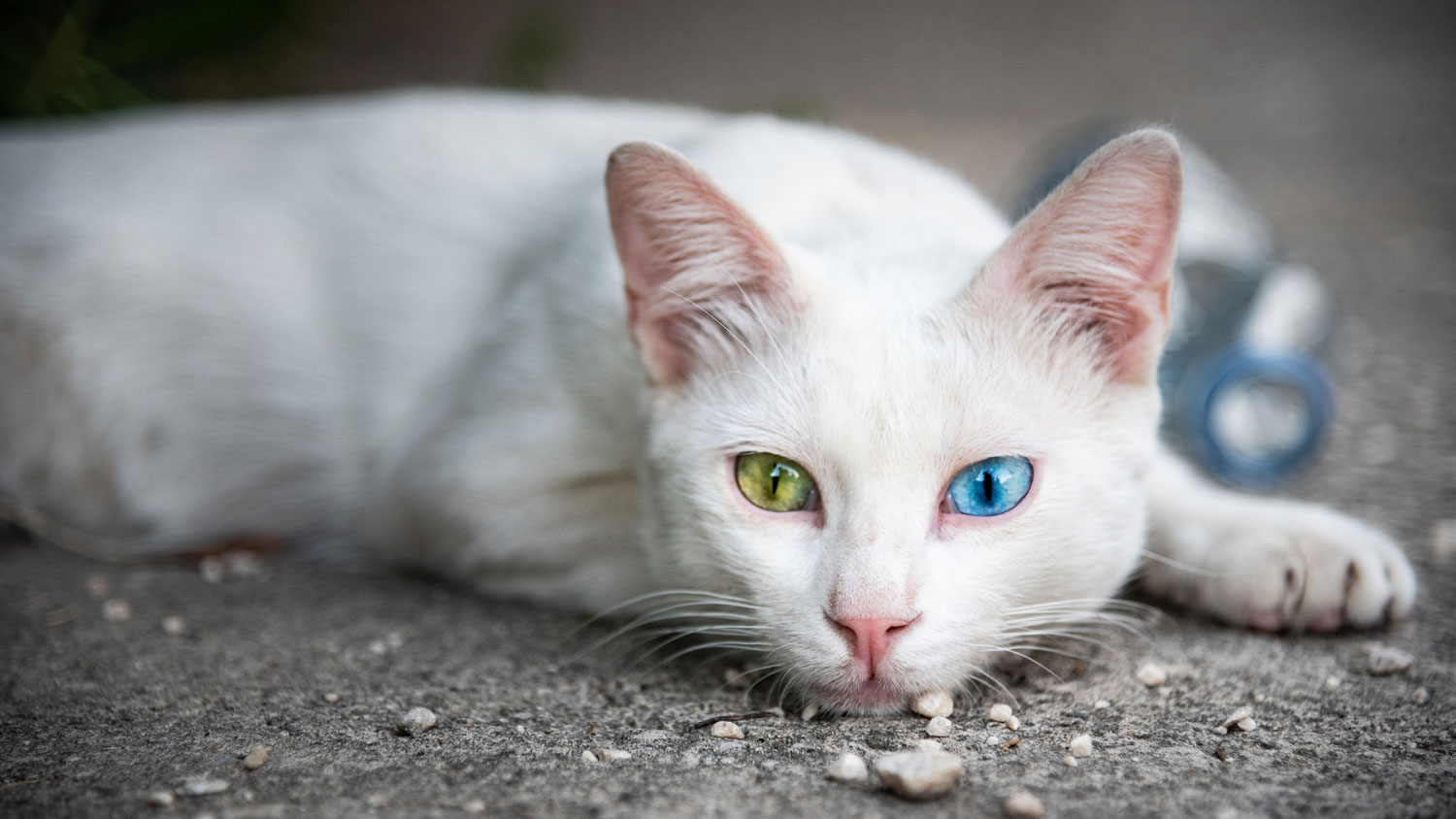
What do cats' eye shapes mean?
On a basic level, the shape of your cat's pupils is determined by how much light is around. In bright sunlight a cat's pupils will close to a thin vertical slit, while in the dark they'll open wide; in both cases this gives them the best vision.
However, the shape of your cats eyes can also be indicative of its mood:
What does it mean when my cats' pupils are big?
Big, dilated pupils are usually the sign of an excited cat, which can be a positive or a negative thing. It could be surprised or happy to see you, or it might be frightened; by taking in your cat's current situation and reading the rest of its body language you should be able to tell what sort of mood it's in.
What does it mean when my cats' pupils are small?
Conversely, thin, constricted pupils are usually indicative of a relaxed cat, and that's generally a good sign. But for a more detailed run-down of how to judge your cat's mood using the state of its eyes and more, see our guide to cat body language.
Why do cats stare at you?
There are plenty of reasons why your cat may stare at you. The likely options are simple curiosity, that it's hungry and looking to you, as its main food provider, to get on with providing it with a meal, or that it's demonstrating that it loves you – particularly if it stares at you with half-closed eyes and blinks slowly.
For more insight into the feline gaze, see our article: Why does my cat stare at me?
What should cats' eyes look like?
Cats' eyes can be a window into their little souls, but they can also be a useful indicator of their health. In general, a healthy cat's eyes should be clear and bright, and the area of the eyeball around the iris should be pure white. The lining of the eyelid should be pink, and your cat's pupils should be the same size; if they're not, your cat may have anisocoria, which can be a symptom of more serious health issues.
Naturally if your cat's eyes don't match that healthy profile, you should take it to the vet to be checked over; better safe than sorry.
Should I worry about cat eye boogers?
Every cat gets crusty little boogers in the corners of its eyes every now and then, and generally that's nothing to worry about; it's pretty much the same thing that we tend to wake up with most mornings, and you can of course wipe it away with a soft, damp cloth, as long as your cat will let you.
However if your has a more persistent, weepy discharge in the corners of its eyes – especially if it's yellow or green – and you're asking yourself, "Why are my cat's eyes watering?", then that's likely to need a vet's attention as it could well be the telltale sign of an eye problem.
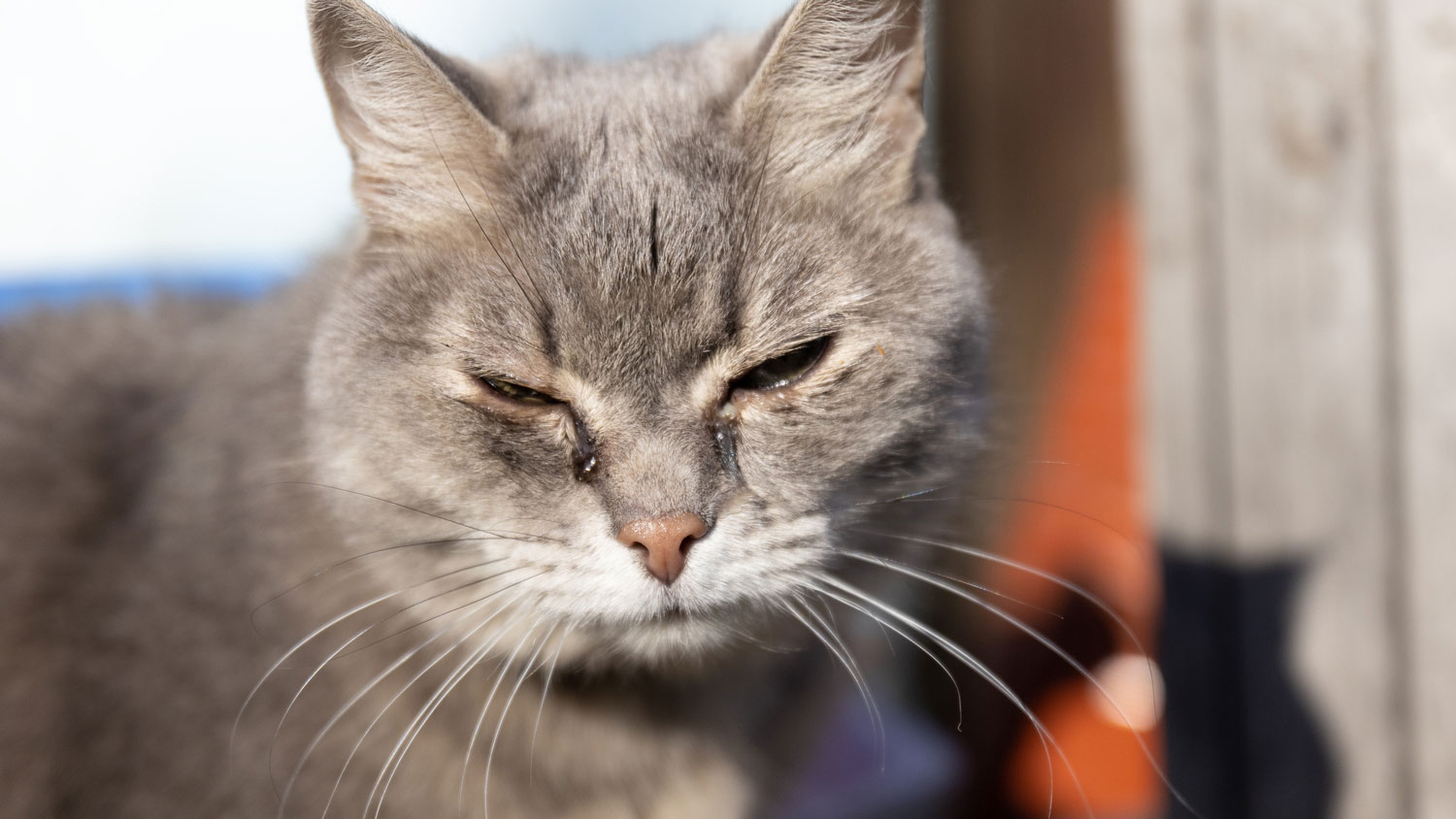
Common eye problems in cats
Because they tend to spend a lot of time outside, low to the ground and hunting in undergrowth or getting into fights, it's not surprising that cats can be prone to eye problems every now and then. Usually it's not serious but if your cat's bothered by an eye problem then you'll need to get a vet to take a look.
Common cat eye problems include pink eye, corneal damage, glaucoma, eye inflammation and even cataracts.
The ASPCA has a handy guide to the top eye problems for cats, but in general you should get straight in touch with your vet if you suspect there's a health issue with kitty's eyes.
Jim is a writer, performer and cat-wrangler based in Bath, who last year adopted a pair of sibling rescue cats who turned out to be effectively feral, and has spent a lot of time since then trying to get them accustomed to people (some success) and each other (ongoing project).
